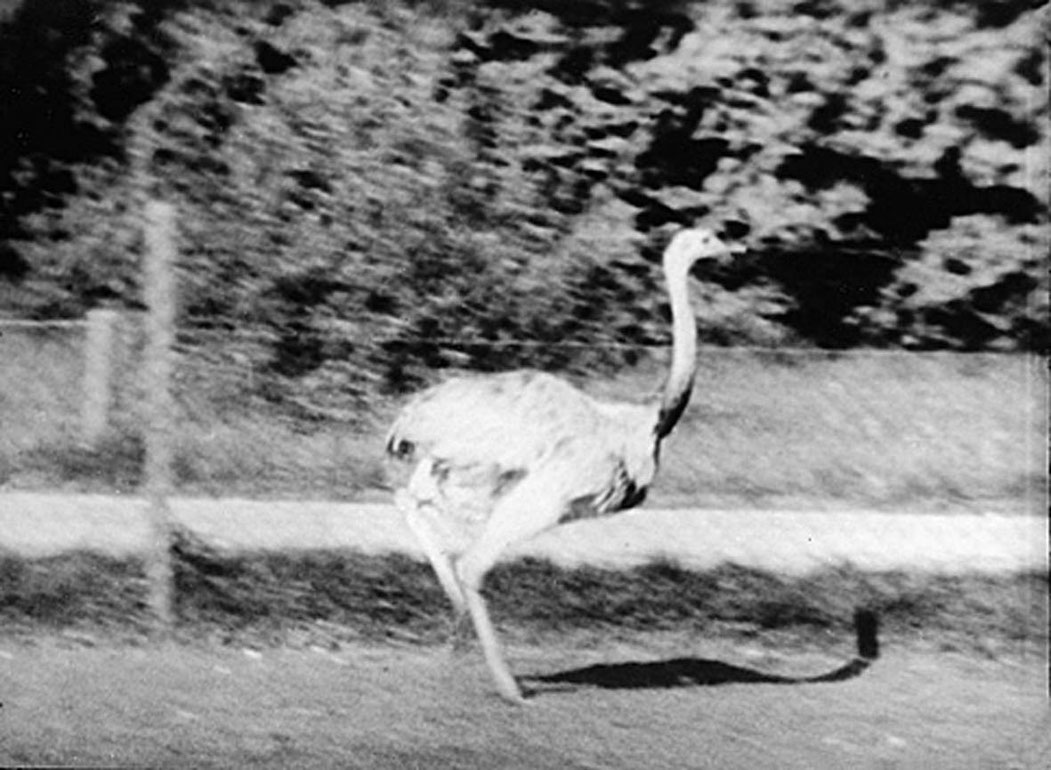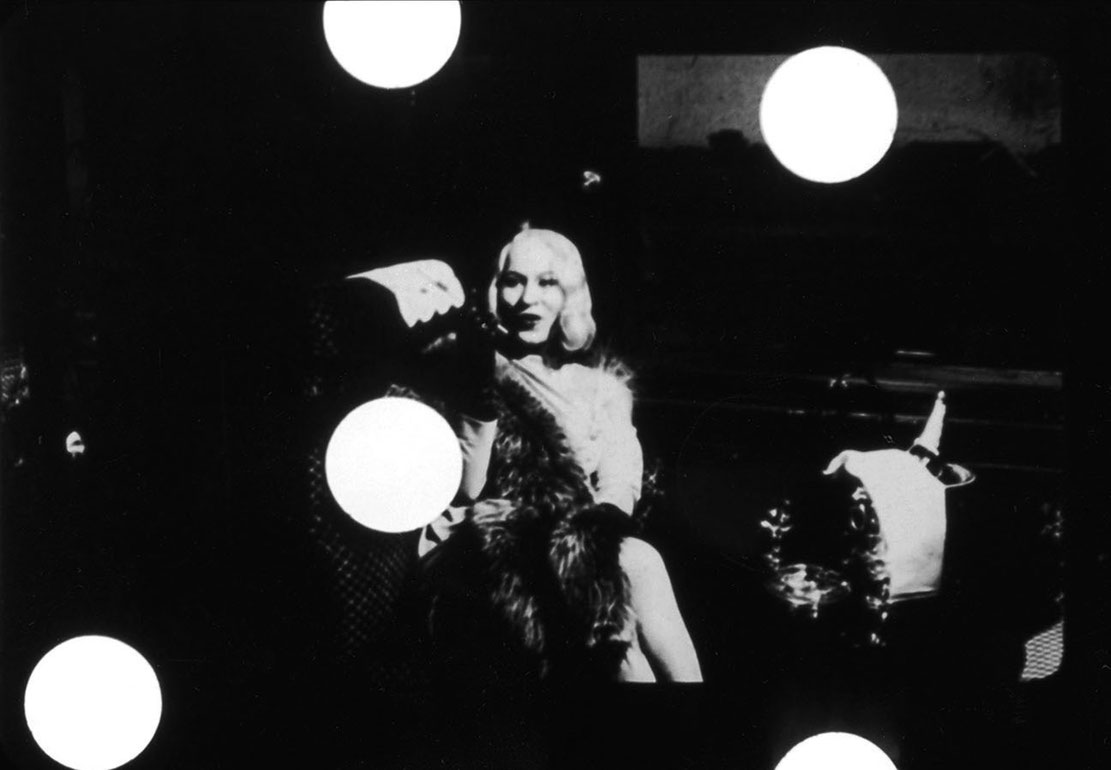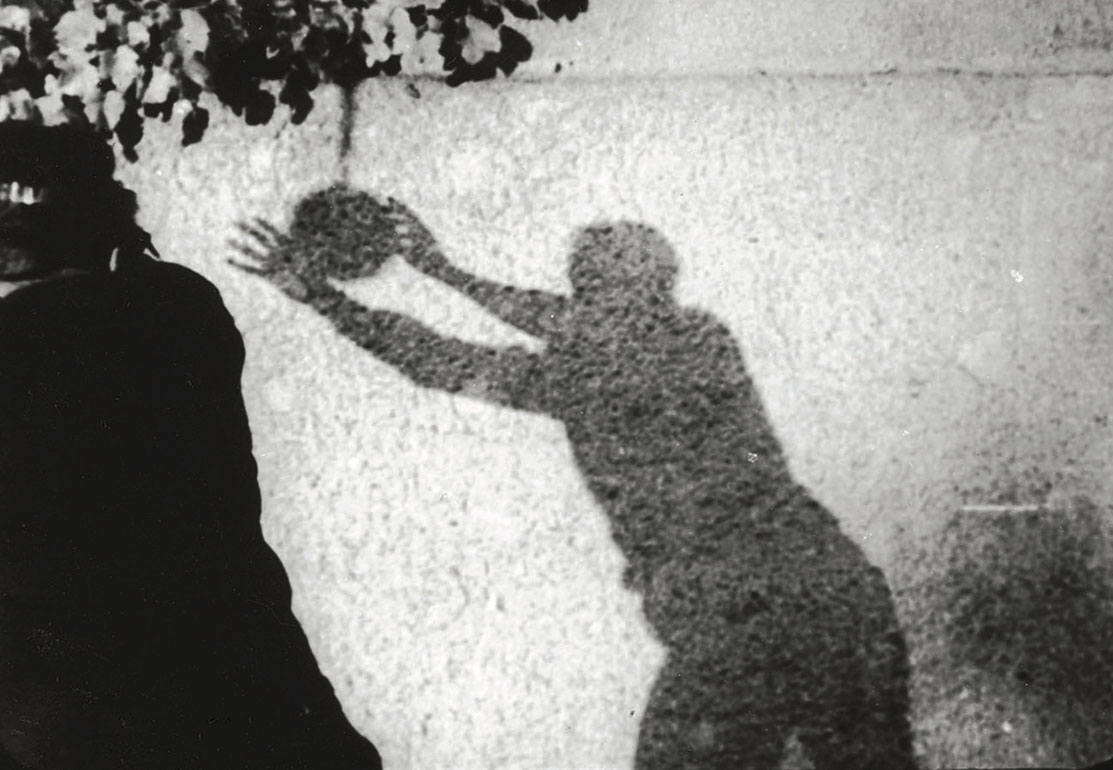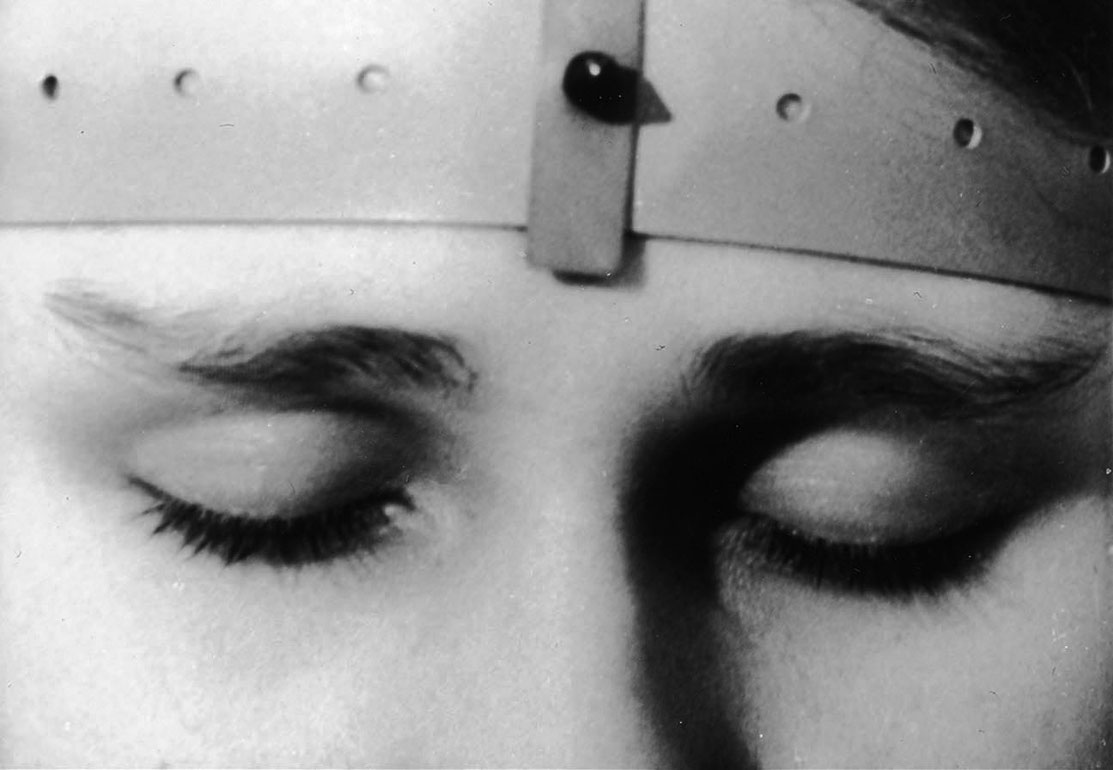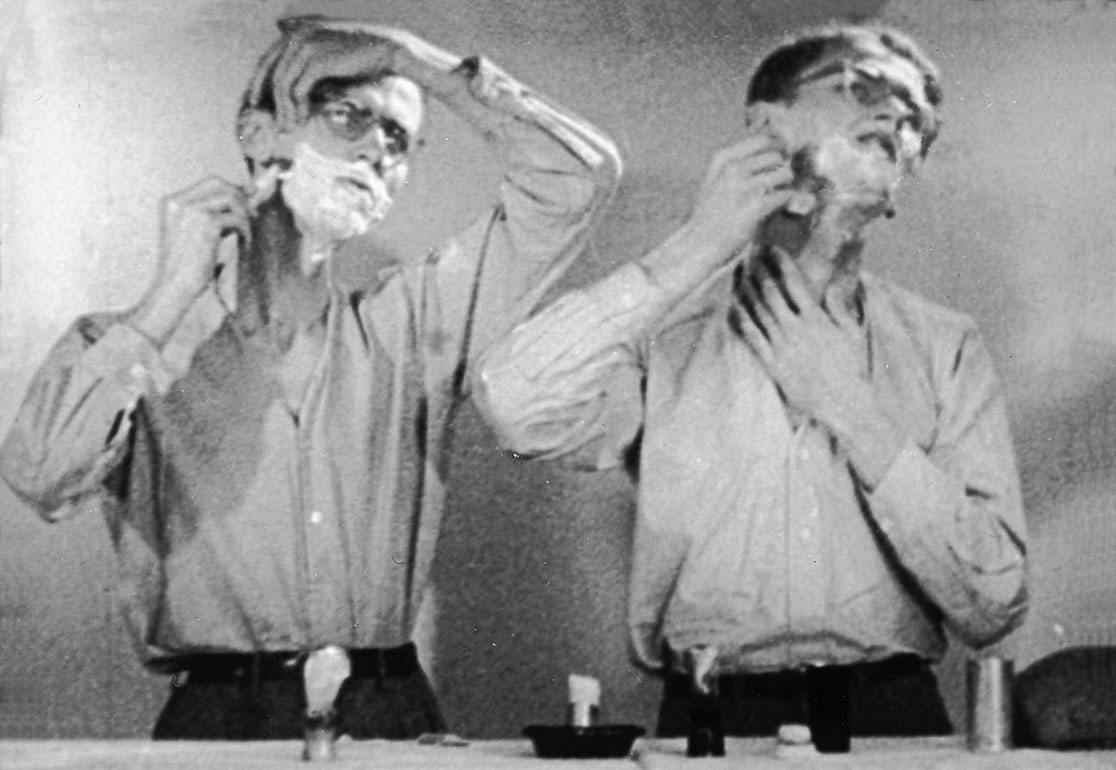Film ist. (1-6)
Film ist.
1 Bewegung und Zeit / movement and time (15 min)
2 Licht und Dunkelheit / light and darkness (10 min)
3 Ein Instrument / an instrument (10 min)
4 Material / material (8 min)
5 Ein Augenblick / a blink of an eye (7 min)
6 Ein Spiegel / a mirror (10 min)
(Der Film kann auch in Teilen gezeigt werden - Minimum drei Kapitel)
Film ist. besteht fast zur Gänze aus Ausschnitten existierender wissenschaftlicher Filme. Es sind Filme über den Flug der Rollertauben und über Intelligenzprüfungen an Affen, über "Verkehrte Welten" und das stereoskopische Sehen, über Hurricanes und "Stoßwellen in Luft". über das Glas, wie es bricht, das Kleinkind beim Gehen und das Daimler-Benz-Auto, wie es in Zeitlupe gegen eine Steinmauer prallt.
Die Verachtung, die wissenschaftlichen Filmen oftmals entgegenschlägt, meint nicht so sehr den Inhalt, sondern ihr biederes, einfallsloses, lächerliches, vom Kommentar verseuchtes Erscheinungsbild; ebenso verdankt sich auch die Faszination für manche Lehrfilme meist allein der Kraft ihrer Bilder: Bilder, die man - selbst im Kino - noch nie gesehen hat.
Film ist. versammelt solche Bilder in Hülle und Fülle. Man spürt hier nicht nur die Politik, sondern auch die besondere Poetik der Gattung wissenschaftlicher Film, die sich häufig "experimenteller" Gestaltungsmittel bedient: extreme Zeitlupe, extremer Zeitraffer, Lochung des Materials, teleskopische oder mikroskopische Kameraarbeit, Solarisierung, Belichtung durch Röntgenstrahlen.
Film ist. ist selbst ein poetischer Film. Wie die verschiedenen Teilstücke hier eine Reihenfolge und einen Rhythmus finden, erinnert an moderne Dichtkunst oder an die Fotoreihen des amerikanischen Künstlers John Baldessari: Bilder, die (was ihre Herkunft betrifft) nichts miteinander zu tun haben, "nicht zusammengehören", werden verglichen, verknotet, zusammengeschaltet.
(Alexander Horwath)
Seven Instances of the Austrian Avant-Garde, by Ed Halter
Imagine this tale as a parable of the distinctive paradoxes of avant-garde cinema. Exceedingly erudite conceptual structures and complex aesthetic systems achieve realization through collisions of light and sound, designed to throw the viewer into a confrontation with the barest elements of cinematic form, made possible with the slightly antiquated products of 19th century science. The formalist edge of Austrian filmmaking has always pushed such extremesmachine flatness and spiritual emotion, animal shock and cognitive puzzle, fleshy materialism and ghostly mystery.
Austrias success in fostering such a powerful experimental film scene is well known among cineastes worldwide. A conflux of generative factors can be cited: the storied history of avant-garde art and literature in Vienna; the influence of filmmakers such as Valie Export, Peter Kubelka and Kurt Kren, who attained international renown decades ago; the success of shorts distributor sixpackfilm, which has helped keep Austrian artists prominent in international festivals; and, not least, the long-standing commitment of governmental organizations such as Film Division of the Department of the Arts to fund such adventurous, non-narrative films. Dynamite doesnt come cheaply.
Look at a sample seven titles underwritten by the Film Division, and the impact of this sustained support will be made clear.
1. Kurt Kren, 49/95 Tausendjahrekino (1995)
There is a discernable sensibility to Austrian experimentsa cluster of threads that run through many of finest examples of filmmaking. Commissioned to mark the cinemas centenary, Krens Tausendjahrekinoopens with a title screen speckled with black bits of dust and detritus, then volleys through staccato flashes of tourists pointing cameras up at the St Stephens Cathedral in Vienna. Each of their banal snaps is countered by Krens guerrilla anthropology, captured with his shaking, zooming lens. Like this one, the best Austrian films are short, brutal and dirty.
2. Martin Arnold, Alone. Life Wastes Andy Hardy (1998)
Arnold takes Judy Garland and Mickey Rooney, two icons of innocent 1930s Americana, then stretches and remixes their language and body movements into a minuet of robotic jitters and beastly bleats, uncovering an uneasy sexual tension in the triangle of girl, boy and mother. The filmmaker digs deeps, hits nerves.
3. Elke Groen, Tito-Material (1998)
From the rubble of a decimated cinema in Bosnia and Herzogovina, Groen found propaganda newsreel footage of Yugoslavian President-for-Life Tito. Reprinted, Tito moves silently under layers of decay. Peter Gidal once defined materialist cinema as trafficking in that space of tension between materialist flatness, grain, light, movement, and the supposed reality that is represented. To this Tito-Materialadds the tension between past and present, state-sponsored fantasy and political reality.
4. Gustav Deutsch, Film Ist. (1998/2002)
The past becomes an ever stranger land in Film Ist. , filled with disjunctive colonialist mansions, supernatural religious footage, and accidentally surrealist science documentaries, all snatched from the era of silent cinema. These fragments are slowed down, re-cut and set to staticky electronic soundscapes. The flicker and hum evoke a hypnotic state: revisiting times lost as a form of disembodied dreaming. The soundtrack itself presages the experiments in digital, visual glitch seen in a more recent generation of Austrian video art.
5. Siegfried A. Fruhauf, Exposed (2001)
White oblong shapes float like clouds across one another, sailing across an expanse of movie-screen blackness, each glowing box in the round-cornered shape of a 16mm sprocket hole. One again a spirit is summoned from the very materials of the machine.
5. Kerstin Cmelka, Camera (2002)
In Cmelkas earlier films, Mit Mir and Et In Arcadia Ego, the filmmaker plays with her own doppelgangers, superimposing herself upon herself multiple times. Camera uses similar optical tricks to print moving images of woodlands on the interior walls of a small room. Recall that camera merely means room or chamber in Latin: so is the film camera offer a window on the world, or merely in illusion of one? Maybe we cant really leave the roomor cameraafter all.
7. Peter Tscherkassky, Instructions for a Light and Sound Machine (2005)
American critics blithely assume that films from outside our borders always comment on our own cultureas if the worlds artistic output had the mere function of an elaborate vanity mirror for us (So, tell me honestly, how do I look?). But here such a claim does not feel like this kind of indulgence. Tscherkassky takes moments from The Good, The Bad and the Ugly and handprints them into a rat-a-tat-tat wartime montage. The throb of exploding bullets reminds us of the clacking of the projector over our heads: the reflection throws us out of the theater and back into the world.
* * *
Certainly not every nation that has chosen to invest its capital into filmmaking has been as fortunate as Austria with the cultural returns. In many other nations, governmental financing and grant foundations make the mistake underwriting the bland and inoffensive. The strategy in Austria seems to have been to support the strongest elements of the idiosyncratic and rebellious fringe, to encourage daringly noncommercial work, and to strive for art, rather than mere entertainment.
Look at key words from these seven titles: kino, waste, material, film, exposed, camera, light and sound machine. Austrian experimental cinema always returns to contemplate its own being, but in doing so, seeks new engagement with the world.

